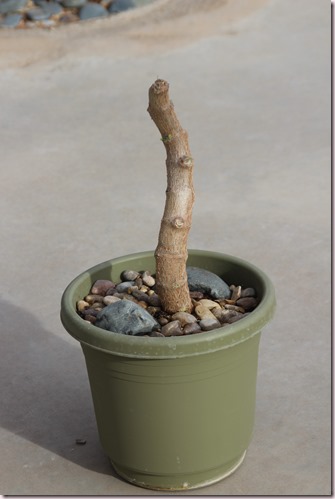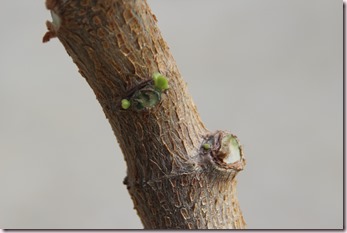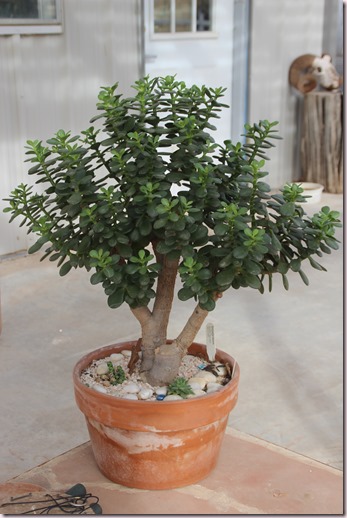Crassula ovata, commonly referred to as a jade tree, is one of the more popular and easily grown succulents. If it is given the right growing conditions. With enough sunlight and correct watering and trimming, crassula ovata will grow into a lovely plant shaped like a tree, hence the name jade tree. If the plant has to reach for the sunlight, however, it will reach out desperately, becoming leggy and misshapen, and the only way to fix it is a major pruning session. Which is the case for all light-deprived succulents. But I digress-that’s another story for another day.
So, back to this jade tree: years ago I gave a cutting to a friend who placed it in front of a less than adequate small south window in his office. The little tree grew but never really had enough light to develop properly. For a crassula to grow up to look like a tree, it also has to be trimmed and shaped as it grows, which this one was not. Time passed and my friend grew weary of the plant, which by now had gotten pretty big. But it was all over the place and uprooting itself out the pot. He asked me if I wanted it back. Well, I had no choice but to take it back as it was begging for some attention.
I brought it home and promptly cut it back to nothing but its fat trunk. And unfortunately, I did not have the presence of mind to take a picture of it before pruning and repotting so I would have a true before picture. What I trimmed off filled a 5-gallon bucket and then some. When I finished pruning and repotting, this is what it looked liked:


That was about three weeks ago. Alas, I also failed to document the day I brought it home, but that sounds about right. And now it has started to put out little new crowns that will become the new branches and leaves. By the end of the summer it will look like a different plant and will begin to take on the correct jade tree shape.


And some day will grow lush and full like this jade tree, which I have had for too many years to count and which has been cut back to nothing but a trunk at least twice.

Be cautious when putting a jade tree out at the beginning of the warm months; it will need filtered sunlight at first so it can acclimatize to the sun or it will sunburn. But even after that, I would give it some protection. I never put mine out in full unfiltered sun. In West Texas, that is just too strong and hot for best results.
My friend is going to want this jade tree back when he see it this summer. But I’ll probably keep it…










